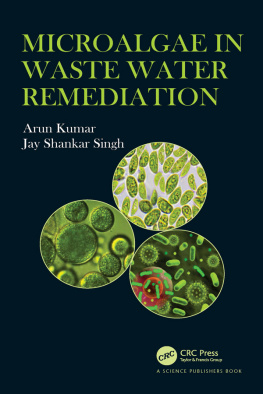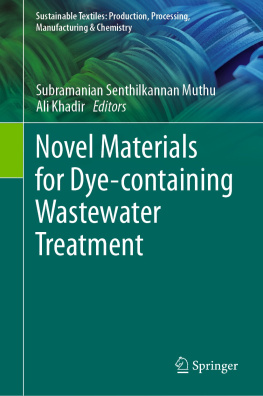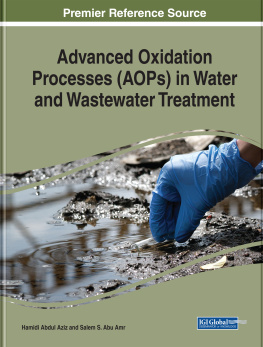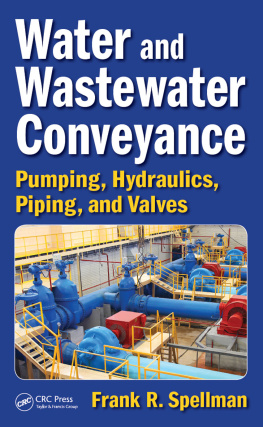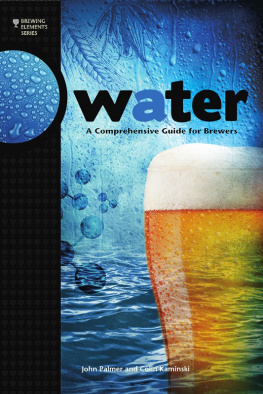Droste Ronald L. - Theory and practice of water and wastewater treatment
Here you can read online Droste Ronald L. - Theory and practice of water and wastewater treatment full text of the book (entire story) in english for free. Download pdf and epub, get meaning, cover and reviews about this ebook. year: 2019, publisher: Wiley, genre: Children. Description of the work, (preface) as well as reviews are available. Best literature library LitArk.com created for fans of good reading and offers a wide selection of genres:
Romance novel
Science fiction
Adventure
Detective
Science
History
Home and family
Prose
Art
Politics
Computer
Non-fiction
Religion
Business
Children
Humor
Choose a favorite category and find really read worthwhile books. Enjoy immersion in the world of imagination, feel the emotions of the characters or learn something new for yourself, make an fascinating discovery.

- Book:Theory and practice of water and wastewater treatment
- Author:
- Publisher:Wiley
- Genre:
- Year:2019
- Rating:4 / 5
- Favourites:Add to favourites
- Your mark:
- 80
- 1
- 2
- 3
- 4
- 5
Theory and practice of water and wastewater treatment: summary, description and annotation
We offer to read an annotation, description, summary or preface (depends on what the author of the book "Theory and practice of water and wastewater treatment" wrote himself). If you haven't found the necessary information about the book — write in the comments, we will try to find it.
Theory and practice of water and wastewater treatment — read online for free the complete book (whole text) full work
Below is the text of the book, divided by pages. System saving the place of the last page read, allows you to conveniently read the book "Theory and practice of water and wastewater treatment" online for free, without having to search again every time where you left off. Put a bookmark, and you can go to the page where you finished reading at any time.
Font size:
Interval:
Bookmark:
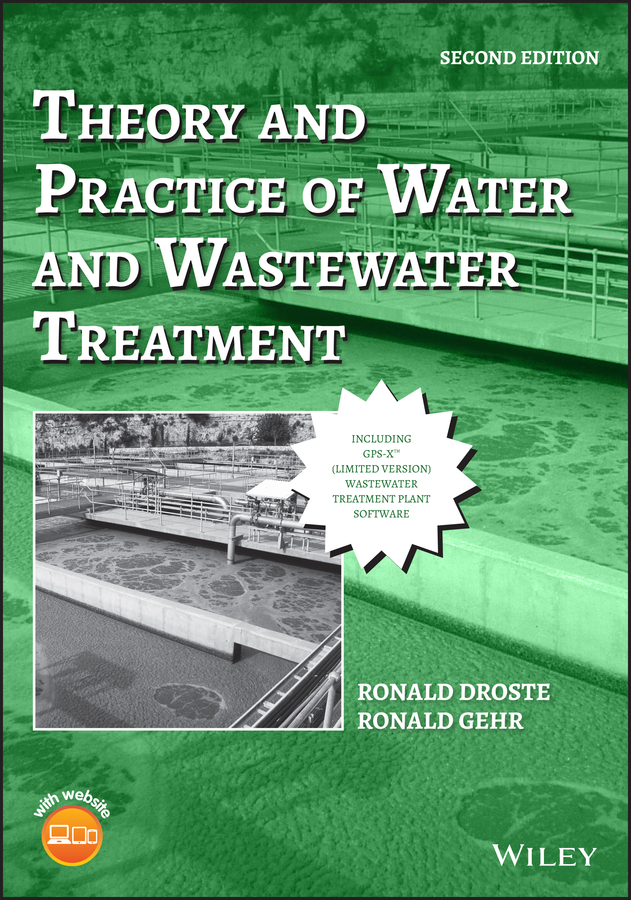
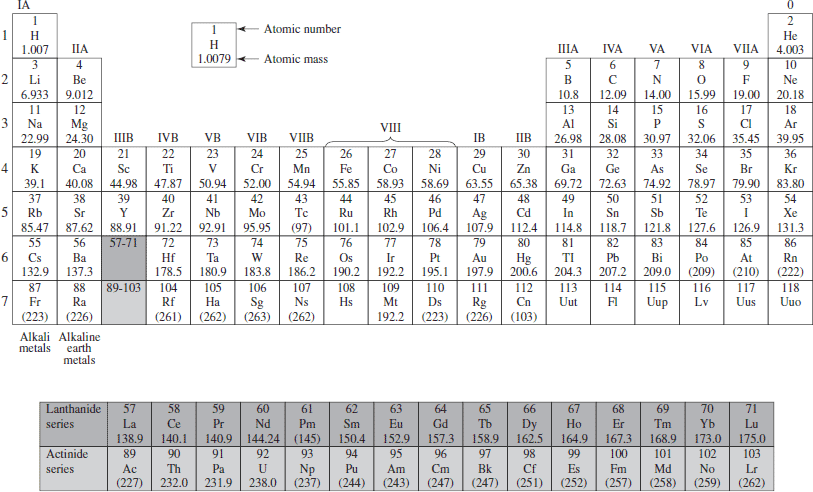
This edition first published 2019.
2019 by John Wiley & Sons, Inc.
Edition History
John Wiley & Sons, Inc. (1e, 1997)
All rights reserved. No part of this publication may be reproduced, stored in a retrieval system, or transmitted, in any form or by any means, electronic, mechanical, photocopying, recording or otherwise, except as permitted by law. Advice on how to obtain permission to reuse material from this title is available at http://www.wiley.com/go/permissions.
The right of Ronald L. Droste and Ronald Gehr to be identified as the authors of this work has been asserted in accordance with law.
Registered Office
John Wiley & Sons, Inc., 111 River Street, Hoboken, NJ 07030, USA
Editorial Office
111 River Street, Hoboken, NJ07030, USA
For details of our global editorial offices, customer services, and more information about Wiley products visit us at www.wiley.com.
Wiley also publishes its books in a variety of electronic formats and by print-on-demand. Some content that appears in standard print versions of this book may not be available in other formats.
Limit of Liability/Disclaimer of Warranty
In view of ongoing research, equipment modifications, changes in governmental regulations, and the constant flow of information relating to the use of experimental reagents, equipment, and devices, the reader is urged to review and evaluate the information provided in the package insert or instructions for each chemical, piece of equipment, reagent, or device for, among other things, any changes in the instructions or indication of usage and for added warnings and precautions. While the publisher and authors have used their best efforts in preparing this work, they make no representations or warranties with respect to the accuracy or completeness of the contents of this work and specifically disclaim all warranties, including without limitation any implied warranties of merchantability or fitness for a particular purpose. No warranty may be created or extended by sales representatives, written sales materials or promotional statements for this work. The fact that an organization, website, or product is referred to in this work as a citation and/or potential source of further information does not mean that the publisher and authors endorse the information or services the organization, website, or product may provide or recommendations it may make. This work is sold with the understanding that the publisher is not engaged in rendering professional services. The advice and strategies contained herein may not be suitable for your situation. You should consult with a specialist where appropriate. Further, readers should be aware that websites listed in this work may have changed or disappeared between when this work was written and when it is read. Neither the publisher nor authors shall be liable for any loss of profit or any other commercial damages, including but not limited to special, incidental, consequential, or other damages.
Library of Congress Cataloging-in-Publication Data
Names: Droste, Ronald L., author. | Gehr, Ronald L., author.
Title: Theory and practice of water and wastewater treatment / by Ronald L Droste and Ronald L Gehr.
Description: Hoboken, NJ, USA : Wiley, 2019. | Includes bibliographical references and index. |
Identifiers: LCCN 2018012644 (print) | LCCN 2018013671 (ebook) | ISBN 9781119312376 (pdf) | ISBN 9781119312383 (epub) | ISBN 9781119312369 (cloth)
Subjects: LCSH: WaterPurification. | SewagePurification.
Classification: LCC TD430 (ebook) | LCC TD430 .D78 2019 (print) | DDC 628.1/62dc23
LC record available at https://lccn.loc.gov/2018012644
Cover image: Courtesy of Ronald Gehr
Cover design by Wiley
This book is dedicated to Marie Durocher and Mary Ruth Gehr, who have shown endless support. The authors are deeply indebted to previous instructors, colleagues, and students who have contributed to this work in numerous ways. Among the many who have made useful suggestions, we wish to express our gratitude for extraordinary efforts to the following people: Dr. J Dudley, Dr. D Frigon, Ms. NM Gaudet, Mr. S Humphries, Mr. Z Lukic, Mr R Marshall, Dr. RM Narbaitz, Dr. S Pavlostathis, Mr. R Reardon, Ms. E Penkarski-Rodon, Dr. Banu rmeci, and Kinjal Mehulkumar Shah.
We had a colleague, a mechanical engineer, who taught a first-year course in mechanics. As his first exercise, he posed the question What is the greatest engineering achievement? to his classes. The students answers ranged from rockets, to computers to automobiles. His answer was the availability of safe drinking water (which distinguishes a developed country from a developing country) in adequate amounts and removal of wastewater. We, of course, agree and hope to make an incremental advancement through this monograph.
The nature of this text has not changed from the first to the second edition, but the technological developments in the 21years since the first edition was published have been astounding. The amount of information available now, in the age of web searching and other electronic resources, is overwhelming. A simple literature search with carefully chosen keywords usually brings up many more than 100 articles.
For those familiar with the first edition, the major upgrades have been in (A host of New Biotreatment Technologies from Membranes to Hybrid Suspended Growth Fixed Film Processes) and a new chapter on life cycle analysis.
This book has been written as a text based on the typical undergraduate background of a civil engineering student. Necessary background information for design and assessment of treatment processes is included in the first sections. These sections do include some review of basic concepts from other courses and should not be considered as replacing the need for these courses. However, these concepts have been focused on the needs of the water quality environmental engineer.
Basic theory of most treatment processes is presented in later sections. The variety of treatment processes is increasing and the issues surrounding their application are often subtle. An introductory coverage of most of the processes is given with more emphasis on common applications. Processes are grouped according to theoretical principles rather than their occurrence in water or wastewater treatment operations. It has been the experience of the authors that many books on the subject simply present formulae without any detailed development: this book addresses that problem. The reader is made aware of theoretical and empirical developments.
This book has a more intense focus on the mechanics of the processes used to treat water or wastewater; design of water distribution and wastewater collection systems are applied hydraulics exercises that are dealt with in other courses. The theory presented in this book is at the level of an undergraduate course. In the past, much of this basic theory was left for the graduate level. As need and room in the undergraduate curriculum for environmental engineering grows, the opportunity now exists to bring undergraduates to a level of theoretical comprehension equivalent to that gained in other disciplines.
The material in the book can be organized in numerous ways depending on the backgrounds of students and the breadth and depth of the environmental engineering curriculum.
Next pageFont size:
Interval:
Bookmark:
Similar books «Theory and practice of water and wastewater treatment»
Look at similar books to Theory and practice of water and wastewater treatment. We have selected literature similar in name and meaning in the hope of providing readers with more options to find new, interesting, not yet read works.
Discussion, reviews of the book Theory and practice of water and wastewater treatment and just readers' own opinions. Leave your comments, write what you think about the work, its meaning or the main characters. Specify what exactly you liked and what you didn't like, and why you think so.

